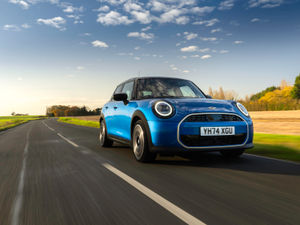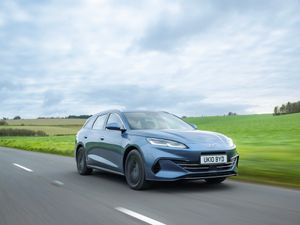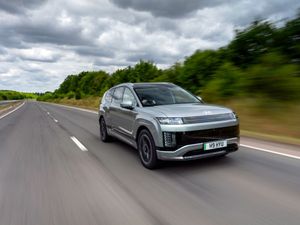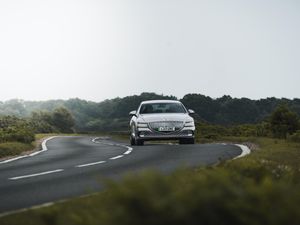Our Suzuki Swift meets its athletic grandfather
Ryan Hirons compares his “new” Swift Sport with our long-term car
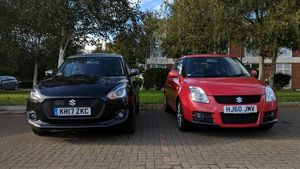
This month has seen another Swift introduction to our fleet.
Well, my fleet — introducing Taylor, my very own 2010 Suzuki Swift Sport (she’s a red Swift, I’ll let you work out the musical naming inspiration). A comparison with our long-termer was an obvious call.
Straight off the bat, it’s easy to see that both cars are in the same line of ancestry despite the two-generation gap between them.

Although the new car has a more angular appearance compared to the cuter looks of its elder stablemate, the basic Swift design ethos is clear to see in both and rather remarkably for cars designed more than a decade apart, proportions have remained pretty similar.
One pretty crucial difference though lies under the bonnet. Our long-term Swift houses a 1.2-litre mild hybrid drivetrain, developing 89bhp and 120Nm of torque — while achieving 62.8mpg.
The eco-friendly hybrid setup of our long termer is the antithesis of what lies in my Swift Sport. Under the sweet red bodywork lies a 1.6-litre, naturally aspirated variable-valve-timing engine — good for 125bhp and 156Nm of torque (oh, and 38mpg if I’m lucky, not ideal when it demands 98 RON fuel).

As a driving experience, the two are surprisingly not worlds apart. Of course, the Sport does have a more dynamic feel and can take a little bit more thrown its way, especially with a much more direct gearbox but amazingly, the hybrid Swift still retains some of that DNA.
Very well weighted steering and a solid gearbox make for a car that’s rather chuckable and fun to drive — especially thanks to the all-wheel-drive system. It doesn’t quite match the pocket rocket feel of the older Swift Sport, but then again, it’s not trying to.
You also get creature comforts that don’t exist in its grandfather. The Sport comes with rock solid bucket seats, an interior straight out of 2005, a single-CD audio system with FM radio and analogue everything — it doesn’t even have automatic wipers or headlights.

It does have keyless entry though, so there’s at least one technology from the last thirty years included.
Compare that with the new model, which unusually for its price point, also comes with radar-guided cruise control amongst the now-usual infotainment systems and the likes.
Reading that, you might begin to think the seven-year old, 36,000-mile Swift was not exactly the best purchase I could have made.
I’m very happy to say you would be wrong.
The driving experience alone makes up for the lack of modern features. My motoring career hasn’t exactly been long, but I’ve never driven something that lets you take it to the limit so often and easily as the Swift Sport — all without a single whimper.
It’s like an excited little Alsatian puppy wanting to prove that it’s really a purebred greyhound, somehow making city speeds fun to crawl along at as well as feeling just at home tearing up winding country lanes. Although the long-term Swift provides 80 per cent of the fun, that last 20 is just so much more valuable.

It does that while comfortably fitting a full week’s worth of shopping and three other occupants.
Oh, and it cost me a mere £4,000. In my eyes at least, a total bargain.
I expected to have a totally different experience driving both cars one after another, but I’m happily surprised with how similar both have proven to be. If only my car could have the fuel economy and infotainment system of the new Swift…
Suzuki have just announced the new Swift Sport too, and I think it’s safe to say the car that forms its base has a lot of potential to let the hot version live up to its predecessors.
FACTS AT A GLANCE
MODEL: Suzuki Swift 1.2 SZ5 SHVS Dualjet 4WD
PRICE: £16,149
ENGINE: 1.2-litre, four-cylinder petrol
POWER: 89bhp
TORQUE: 120Nm
MAX SPEED: 106mph
0-60MPH: 12.4 seconds
MPG (COMBINED): 62.8
EMISSIONS: 101g/km
MILEAGE (TO DATE): 6,280
HIGHLIGHT OF THE MONTH:
Trying to establish a term for a Swift gathering. A school of Swifts, perhaps?


